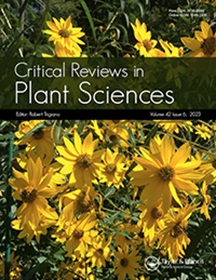Uncovering the Secrets of Secretory Fluids During the Reproductive Process in Ginkgo biloba
IF 6
2区 生物学
Q1 PLANT SCIENCES
引用次数: 2
Abstract
Abstract Reproduction is an essential process for all organisms. Although our understanding of the reproductive mechanism in angiosperms has rapidly advanced in recent years, it still lags behind that of gymnosperms. As an ancient gymnosperm, Ginkgo biloba has a remarkable evolutionary history and occupies an important phylogenetic position, representing one of the most ancient and primitive modes of reproduction among seed plants. G. biloba is an archegoniate, where an egg cell develops inside an archegonium; it has a particular pollen chamber and archegonial chamber along with flagellated gametes (spermatozoids). Among these processes, secretions play an important role. In this study, we review the progress on understanding the mechanisms underlying the production and function of pollination drops (PDs), and fertilization fluid in G. biloba. We also highlight recent achievements that have considerably advanced our understanding of the interactions between PDs and pollen, and how PDs are endogenously and intracellularly transported. Finally, we discuss novel insights into the small RNAs of PD transport and the mechanisms of precisely guiding pollen tube growth in G. biloba. By reviewing these results, we demonstrate the structural patterns of G. biloba pollination and fertilization, thus reproducing the uniqueness of the sexual reproduction of ancient plants.银杏生殖过程中分泌液的秘密
生殖是所有生物的基本过程。尽管近年来我们对被子植物的生殖机制的认识有了快速的进展,但对裸子植物的认识仍然滞后。银杏是一种古老的裸子植物,具有显著的进化史和重要的系统发育地位,是种子植物中最古老、最原始的生殖方式之一。G. biloba是一种卵母细胞,卵细胞在卵母细胞内发育;它有一个特殊的花粉室和主母室以及鞭毛配子(精子)。在这些过程中,分泌物起着重要的作用。本文综述了近年来国内外对大叶藻授粉液滴和受精液的产生和功能机制的研究进展。我们还强调了最近取得的成就,这些成就大大提高了我们对PDs与花粉之间相互作用的理解,以及PDs如何内源性和细胞内运输。最后,我们讨论了小rna PD转运的新见解和精确引导G. biloba花粉管生长的机制。通过对这些研究结果的回顾,我们揭示了双叶蓝传粉和受精的结构模式,从而再现了古代植物有性生殖的独特性。
本文章由计算机程序翻译,如有差异,请以英文原文为准。
求助全文
约1分钟内获得全文
求助全文
来源期刊
CiteScore
12.90
自引率
1.40%
发文量
15
审稿时长
>12 weeks
期刊介绍:
Critical Reviews in Plant Sciences focuses on presenting in-depth and up-to-date reviews of timely and/or cutting-edge subjects in the broad discipline of plant science, ranging from molecular biology/biochemistry through the areas of cell biology, plant pathology and physiology, genetics, classical botany, and ecology, to practical agricultural applications. Articles in the journal provide an up-to-date literature base for researchers and students, pointing the way towards future research needs. The journal is also a significant source of credible, objective information to aid decision makers at all levels.

 求助内容:
求助内容: 应助结果提醒方式:
应助结果提醒方式:


